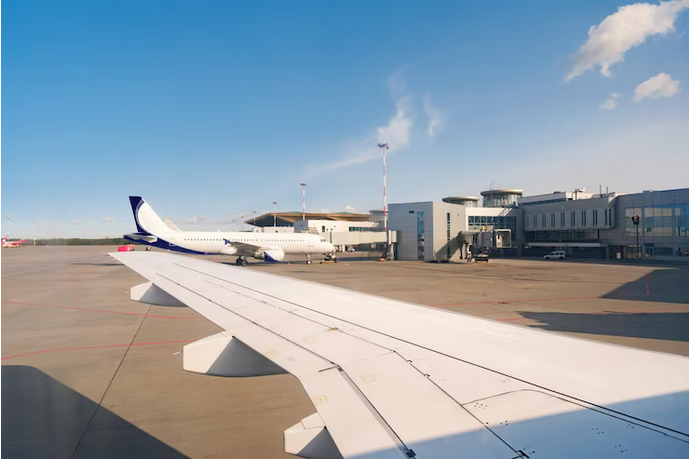San Francisco, often referred to as the "City by the Bay," is a vibrant and bustling metropolis known for its iconic landmarks, diverse culture, and picturesque scenery. Whether you're a visitor or a resident, getting to and from the city's airports can be a crucial aspect of your journey. San Francisco International Airport (SFO), Oakland International Airport (OAK), and San Jose International Airport (SJC) serve as the primary gateways to the Bay Area. To make your travel experience smoother and stress-free, it's essential to have a good understanding of the available Airport transport services in San Francisco. In this guide, we'll explore various transportation options, their pros and cons, and provide valuable tips to help you make informed choices.
1. Airport Shuttle Services:
Airport shuttle services are a convenient and cost-effective way to travel between San Francisco and its surrounding airports. These shared-ride vans are operated by various companies and offer door-to-door service, making them an attractive choice for many travelers. Here's what you need to know about airport shuttle services:
Pros:
Affordable: Shuttle services are typically more budget-friendly than taxis or rideshares, making them an excellent choice for budget-conscious travelers.
Convenience: Shuttle services pick you up from your desired location and drop you off directly at your terminal, eliminating the need for additional transportation.
Shared Ride: If you're traveling alone or in a small group, you can share the shuttle with other passengers, reducing the overall cost.
Cons:
Scheduling: Shuttle services operate on a fixed schedule, so you may need to adjust your travel plans to align with their departure times.
Travel Time: The shuttle may make multiple stops to pick up or drop off other passengers, potentially increasing your travel time.
2. Taxi Services:
Taxis have long been a reliable mode of transportation to and from airports. In San Francisco, you can easily find taxi stands at the airport terminals, and hailing a cab is relatively straightforward. Here are some considerations when opting for taxi services:
Pros:
Availability: Taxis are readily available at the airport, so you don't need to wait for a specific shuttle or rideshare driver.
Direct Route: Taxis provide a direct route to your destination, with no intermediate stops.
Cons:
Cost: Taxis tend to be more expensive than shuttle services and rideshares, especially during peak travel times.
Traffic: San Francisco is known for its traffic congestion, which can significantly impact your travel time and fare.
3. Rideshare Services:
Rideshare services like Uber and Lyft have gained immense popularity in recent years and are widely available in San Francisco. These services offer the convenience of requesting a ride with just a few taps on your smartphone. Here's what you should know:
Pros:
Convenience: Rideshare services are incredibly convenient, allowing you to request a ride whenever you need it.
Price Transparency: You can see the estimated fare before booking, providing clarity on the cost of your trip.
Ride-Sharing: You can share your ride with other passengers, reducing the cost further.
Cons:
Surge Pricing: During busy times, rideshare services may implement surge pricing, which can significantly increase the fare.
Availability: While rideshares are generally accessible, you might experience longer wait times during peak hours or in less densely populated areas.
4. BART (Bay Area Rapid Transit):
The Bay Area Rapid Transit system, known as BART, offers a reliable and affordable option for traveling between San Francisco and the airports. BART connects SFO and OAK airports with various stations in the city. Consider the following when using BART:
Pros:
Affordability: BART fares are usually lower than taxis and rideshares, making it an economical choice.
Speed: BART trains are a fast and efficient way to reach your destination, especially during rush hour when traffic is heavy.
Environmental Benefits: BART is an eco-friendly mode of transportation, contributing to reduced carbon emissions.
Cons:
Limited Service Hours: BART has specific operating hours, so if you have a late-night or early-morning flight, you might need to explore alternative transportation options.
Station Proximity: Depending on your location in the city, you may need to take additional transportation (e.g., a taxi or rideshare) to reach the nearest BART station.
5. Rental Cars:
If you prefer the flexibility of having your own vehicle, renting a car is an option worth considering. San Francisco airports have several rental car agencies on-site, offering a wide range of vehicles to choose from. Here's what you should keep in mind:
Pros:
Flexibility: Having a rental car allows you to explore the Bay Area at your own pace and convenience.
No Sharing: You won't have to share your ride with other passengers, ensuring privacy.
Cons:
Cost: Rental cars can be expensive, with additional fees for insurance, fuel, and parking.
Parking Challenges: Finding parking in San Francisco can be challenging and expensive, especially in popular tourist areas.
Conclusion:
In conclusion, navigating San Francisco's airports requires careful consideration of your transportation options. Your choice should depend on factors such as your budget, travel schedule, and personal preferences. Airport shuttle services are ideal for those seeking an affordable and convenient option, while taxis offer direct routes but can be pricey. Rideshare services provide flexibility but may have variable pricing. BART is an economical and eco-friendly choice, and rental cars offer maximum freedom but come with added costs.
To make the most informed decision, plan ahead, and consider the specific details of your trip. Whether you prioritize cost savings, convenience, or environmental concerns, there's a suitable airport transport service to meet your needs in San Francisco. By understanding your options and weighing the pros and cons, you can ensure a smooth and stress-free journey to or from the City by the Bay.





Comments